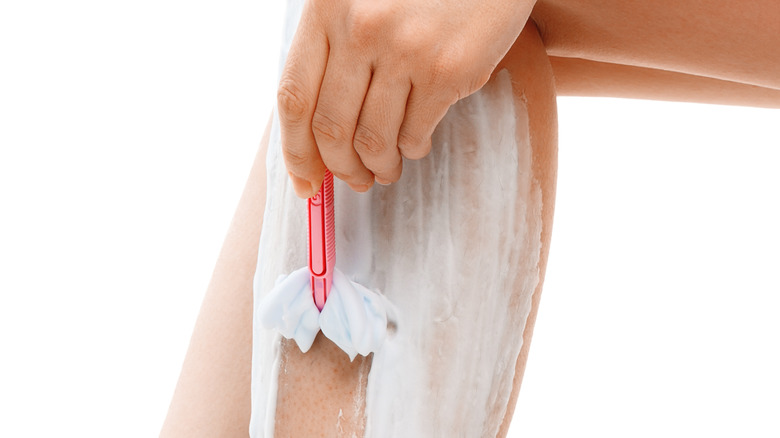This Is What Really Causes Ingrown Hairs
Many people are self-conscious about their skin. It may start in adolescence or develop later in life, but they are acutely aware of blemishes and spots. That awareness only grows when the skin issues are on the face or in more sensitive areas, like the bikini line. Not all of those blemishes are pimples, however. Some can be ingrown hairs, and although they may look alike, there are some key differences between them.
Both create bumps in the skin that can hurt when rubbed or pressed. Additionally, both can become red and swollen if touched too often. As Verywell Health explains, pimples can appear anywhere, while ingrown hairs tend to appear in places where hair grows in quantity or where a person engages in hair removal. People with facial hair may see more ingrown hairs there, while those who remove hair from their legs or bikini area are prone to ingrown hairs in these areas. Pimples, by contrast, can appear across the chest, back, arms, and face, regardless of hair growth.
Knowing the difference between the two is important, but it won't help you avoid ingrown hairs. For that, you need to know their specific causes and ways you can minimize your risk of developing the uncomfortable, inflamed bumps.
Shaving against the grain can result in ingrown hairs
While some may think that hair removal is the cause of ingrown hairs, the Mayo Clinic explains that two types of hair removal are much more likely to cause ingrown hair than others: tweezing and shaving. Both methods leave a small fragment of hair in the skin, as opposed to waxing or sugaring, which remove the hair entirely. Pulling your skin tight when shaving further increases the risk because it can push the hair fragment under the skin. This fragment then grows inside the skin, rather than through it. Over time, this causes inflammation as the body reacts to it being lodged under the skin.
The Mayo Clinic goes on to explain that regular ingrown hair can lead to permanent "razor bumps" on the skin, hyperpigmentation, and other complications in affected areas. However, there are ways to avoid ingrown hairs. Self spoke with several dermatologists, who all agreed that using a lubricant of some kind — like shaving gel — before shaving is a good way to avoid ingrown hairs. Other ways to reduce your risk are to always use sharp blades in your razor, shave in the same direction of hair growth, and not pull your skin tight while shaving. It may take time to change your hair removal habits, but your skin will thank you when you do.


